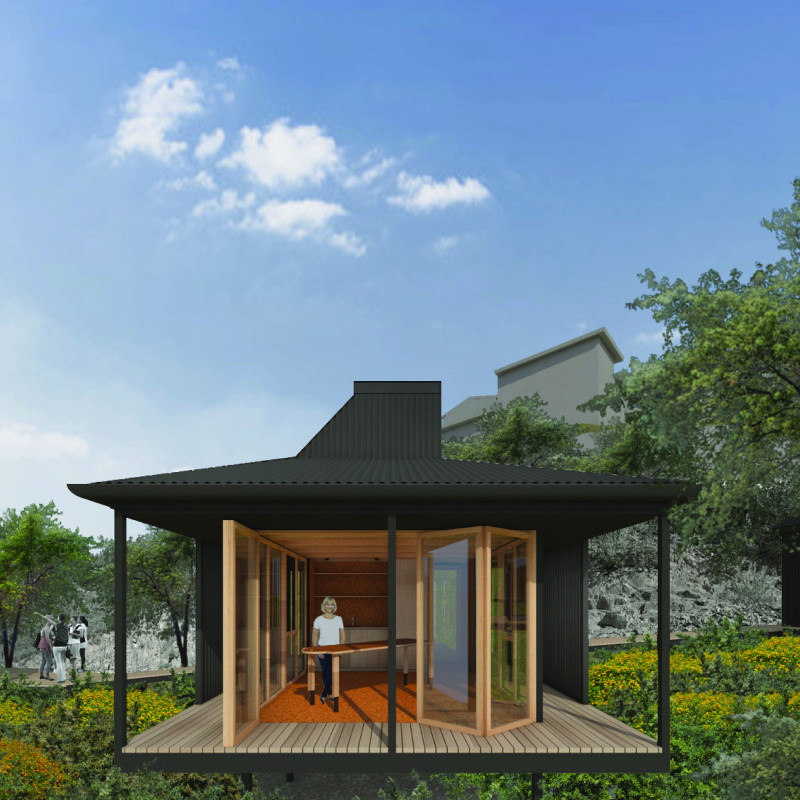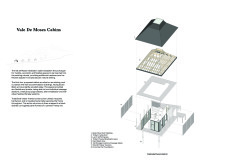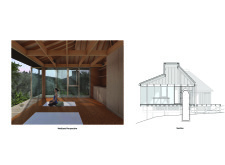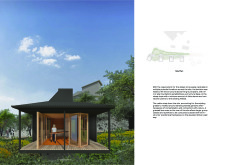5 key facts about this project
Design Functionality
The architectural design of the Vale De Moses cabins emphasizes sustainability and functionality. Each unit is elevated above the ground, supported by micro-pile foundations, ensuring minimal disruption to the existing site. This thoughtful placement allows for unobstructed views of the landscape while maintaining ecological integrity. The cabins include large glass facades that facilitate natural light and promote a strong visual connection with the environment, further enriching the user experience.
Passive design principles are central to the functionality of the cabins. By incorporating deep eaves and strategic orientation, the architecture takes advantage of natural ventilation and solar gain, allowing for comfortable internal climates without excessive reliance on mechanical systems. The design features also reflect a commitment to eco-friendliness, with elements such as a rainwater harvesting system for sustainable water management.
Unique Design Approaches
The Vale De Moses project distinguishes itself through innovative material choices and flexible spatial configurations. The use of hemp fiber for roof cladding and recycled timber for framing not only supports sustainability but also enhances the visual aesthetic, creating a rustic yet modern appearance. Black-stained corrugated panels made from cement and hemp mix complement the natural surroundings while providing durability.
Moreover, the modular design of the cabins allows for customizable interior layouts. This adaptability caters to various group sizes and types of activities, thereby maximizing the usability of the spaces. The careful integration of timber privacy screens promotes a sense of solitude without isolating the cabins from their environment, balancing openness and seclusion effectively.
Environmental integration is a core theme in the project. The cabins' design respects the site's natural contours, using existing rock formations to limit site disturbance. By ensuring that the cabins are in tune with their surroundings, this architecture fosters a deeper connection between users and nature, which is central to the retreat’s purpose.
For a comprehensive understanding of the architectural intentions and design outcomes, readers are encouraged to explore the architectural plans, sections, and designs associated with the Vale De Moses cabins, as they provide further insight into the unique solutions presented in this project.


























